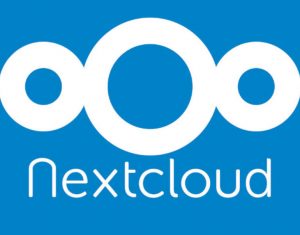Jack Wallen has a big idea to help Linux succeed with hardware manufacturers and software companies: Flagship Linux.

Image: iStockphoto/Spectral-Design
For years I’ve been saying that Linux needs to be able to present to developers, manufactures, and even the public, a unified distribution that could serve as it’s standard bearer. This is one of those opinions that tends to be incredibly divisive. It’s also one of those opinions I hold very strongly and was recently reminded of when fellow open source evangelist Jason Evangelho penned a piece titled “Linux Has A Hardware Problem And We Need To Solve It.” In that piece, Evangelho discussed a podcast from Noah Chelliah (co-host of the Destination Linux) in which he highlighted one particular passage:
“You can go to a Best Buy and purchase a computer, but depending on who made that computer, when that computer was made, when in a [distro’s] release cycle that computer was made, what software was available at the time, what the release cadences were of the software projects when that LTS or that distro came out, all affects the quality and the experience you get as an end user.”
That struck me hard. It also made me realize that the idea I’ve pushed in articles, on podcasts, and in discussions needs to be said again: Linux needs a flagship distribution. Let me explain.
SEE: Linux commands for user management (TechRepublic Premium)
Third parties and OEMs
This issue begins with third parties and original equipment manufacturers (OEMs). Imagine that you are a manufacturer of laptops and you’ve heard the pressure from consumers to deliver a model preinstalled with Linux. You begin your research and quickly realize one of the first things you’d have to do is decide on a distribution. The idea of certifying your hardware for every combination of kernel, package manager, desktop environment, and init system makes the process impossible, so it boils down to choosing a single distribution.
In doing so, you’ve just lost a large number of consumers. Why? Because you didn’t choose their Linux distribution of choice. In a single decision, you went from having the enthusiasm and support of an entire community to nearly being cancelled by a significant enough percentage to make the idea less than appealing.
Now, imagine you’re a third-party software company and you want to port your number one selling title to Linux. The same problem holds true. What desktop do you port to? What package manager? Do you develop it with snap, flatpak, AppImage? What about the kernel? Unless you go the snap, flatpak, or AppImage route, the challenges are many.
If you do go with snap, you lose the flatpak fans and if you opt for AppImage, you make everyone unhappy. Then there’s the idea (floating in the backs of the minds of every board member of your company) that once you’ve successfully ported that software to Linux, no one will buy it. After all, the Linux community is famous for not paying a penny for software.
Enter “Flagship Linux”
Now, imagine a single distribution has been chosen, from the hundreds of currently available distributions, to represent Linux to hardware manufacturers, vendors, and software companies. That one Linux distribution would be used by hardware manufacturers and software companies to create computers and software guaranteed to run on Linux.
That distribution would have only one desktop environment, one package manager, one init system, and the current stable version of the Linux kernel. Users could also download this Linux distribution and use it at will, but the primary purpose of “Flagship Linux” would be to make things easier for manufacturers and developers.
Set aside your affinity for the Linux distribution you use and ponder this for a moment: Would you rather argue over which distribution is the best, or would you rather see Linux enjoy massive growth on the desktop and laptop arenas?
We’ve already seen a number of manufacturers start the rollout of preinstalled Linux laptops. Lenovo, Dell, HP are all joining in on the fun, but the process hasn’t been easy. As you can see, those manufacturers are, for the most part, all winnowing down the selection of Linux distributions available. Some are selling their hardware with only one Linux option, while certifying the same hardware for a very limited amount of other distributions.
What if all of those manufacturers didn’t have to bother with making that choice? What if the choice was made for them? What if the Linux community reached out to manufacturers and developers to say, “This is ‘Flagship Linux.’ We’ve created this distribution to make things easier for you. Develop your hardware and software for this distribution and we’ll buy it.”
Of course, once you buy that hardware or software, there’s no reason why you can’t attempt to install your Linux distribution of choice (or desktop environment) on that desktop hardware, or install that software on the flavor of Linux you prefer. Making the task easier for hardware manufacturers and software developers should be the main goal. Leave the distro wars (those wars that have helped sour manufacturer’s opinion of Linux for so long) behind, so businesses can do what we want them to do–manufacture hardware and software that works with Linux.
A long ways away
I realize this is a big ask. Every time I’ve ever broached the subject, I am pummeled from all sides, with pushback about how the greatest thing going for Linux is choice. I get that, but this idea isn’t stripping away that choice from users. I am not, in any way, saying we should abandon all but one Linux distribution. What I’m saying is that we should keep Linux as free and varied as it is–for users. For consumers, maybe it’s time to settle on a single distribution that could serve as the Linux “Flagship,” so that manufacturers can finally have a much easier route to supporting the operating system we all know and love.
I’ve been distro hopping for 20 years. I’ve used about every possible Linux distribution there is–every combination of desktop, package manager, kernel, and init system. After a couple of decades, I finally realized I just needed a Linux distribution that could help me get my work done without getting in the way. Right now, that distribution is Pop!_OS, but who knows which distribution it’ll be in the future. Truthfully, it doesn’t matter. What does matter is that I can use an operating system that is stable, reliable, secure, and user-friendly. That distribution could be Pop!_OS, Ubuntu, Mint, Fedora, Arch, or elementaryOS.
Trust me, I love that Linux has so many choices. Choice is part of what brought me to Linux in the first place, but that doesn’t mean I want to foist that choice onto consumers who’ve never used–or even heard of–Linux. Given that’s the audience we should be focusing on at the moment (instead of continually preaching to the choir), we wouldn’t want to scare them off with too many choices right out of the gate.
“Flagship Linux” is long overdue. I’ll keep harping on this issue until it gains enough steam to become a reality. This is what Linux needs–it’s what will help make mass acceptance a possibility.
Also see
Source of Article



